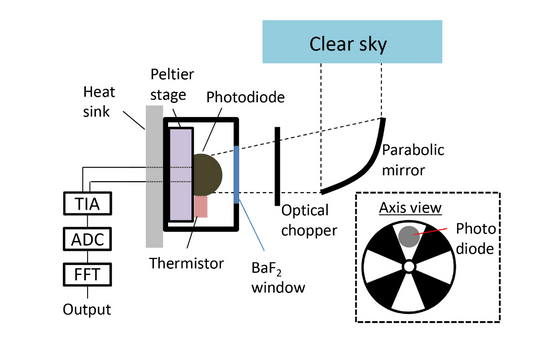Technology to generate energy directly from the `` cold cold '' will be developed

by
A paper was published in Applied Physics Letters , an academic journal, stating that a method for generating energy directly from the cold of the universe was established. According to this, by directing semiconductor diodes to outer space close to absolute zero, it is possible to extract energy from the cold as if the solar panel generates electricity with sunlight.
Experimental demonstration of energy harvesting from the sky using the negative illumination effect of a semiconductor photodiode: Applied Physics Letters: Vol 114, No 16
https://aip.scitation.org/doi/figure/10.1063/1.5089783
Experimental device generates electricity from the coldness of the universe
https://phys.org/news/2019-05-experimental-device-electricity-coldness-universe.html
The international research team of Ms. Masashi Ono of Fujifilm Advanced Research Laboratories announced the power generation technology that uses the cold of the universe. With this technology, it is possible to obtain energy from the temperature difference using a photodiode aimed at outer space.
The following image is a schematic diagram of the power generation device. You can see the structure of the hemispherical photodiode in the center of the device facing the sky through a parabolic mirror .

According to this technology, a small amount of electricity generated by the “negative illumination effect” that is generated when heat is radiated from an object is aggregated and converted into energy. However, as of 2019, electricity can be generated only in places where the temperature is high from absolute zero to just a few degrees.
Although it seems unlikely that it will be able to generate electricity in the cold at night, there are places where it can be fully utilized. It is a cosmic space close to absolute zero.

by pxhere
Although not practical power generation, the research team has already succeeded in generating about 64 nanowatts of electricity per square meter. Also, theoretically, it can generate about 4 watts of electricity per square meter, and if it is put into practical use, it will be installed in artificial satellites and space probes, and will enter the shadows of the earth and celestial bodies It can be used for auxiliary power when solar power generation is not possible.
Related Posts:
in Science, Posted by log1l_ks







